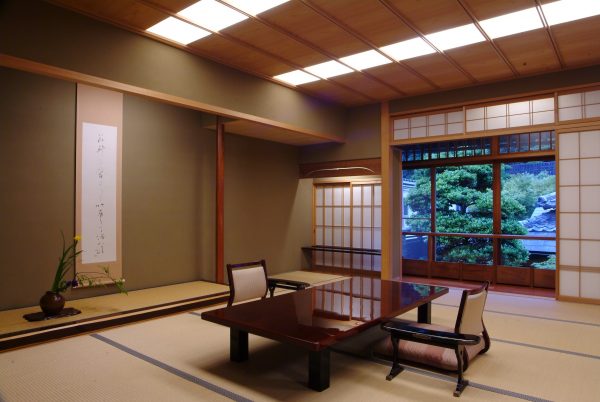Like this post? Help us by sharing it!
The beauty of Japanese kanji characters is that they can convey so much meaning in so few strokes. Take the kanji “wa” 和 for example. It has numerous connotations wrapped up in just eight simple lines, and one those meanings, “harmony”, is particularly significant during this time of worldwide crisis.
Let’s first jump back almost two millennia to the founding of the Japanese nation. The oldest recorded name for Japan is “Wa”, originally used by the Chinese to refer to the Yamato 大和 people living in Japan around the 3rd century. After using a different kanji that had the pronunciation of “wa” but the unfortunate meanings of ‘distant’, and ‘dwarf’ (倭), the kanji “wa” 和 was chosen as a homophone by the Japanese in the 8th century, which has the much more pleasing meaning of “harmony”. The importance of harmony was already widespread across Japan by then, as regent and politician Prince Shotoku had included it in the Seventeen-Article Constitution, apparently created in 604. Prince Shotoku and his Constitution had such a profound effect on Japan and Japanese society that anyone travelling in Japan in the 1960s-80s would have seen his image on the 10,000-yen banknotes.

This usage has continued down the centuries. Despite the modern name for Japan being Nihon or Nippon 日本, these days “Wa” is used to mean “Japanese-style” when combined with numerous other words.
For example:
washoku 和食 – Japanese food
washi 和紙 – traditional Japanese paper that is often so beautiful you just want to frame a piece
washitsu 和室 – Japanese style room with tatami flooring, particularly used in Japanese accommodation and some restaurants

And an incredibly useful word for unsuspecting visitors on day one of their Japan trip: washiki 和式 – Japanese style squat toilet. There’s often one of these in public restrooms. The opposite is youshiki 洋式 – a useful Kanji to remember!
Bonus tip; if you’re waiting in a crowded restroom and the washiki toilet becomes free and you just don’t feel up to that adventure, say “youshiki wo matteimasu”, “I’m waiting for the Western-style toilet”, and allow the person behind to go ahead. It gets a knowing smile but helps move the queue along.
Now, back to the original meaning of “wa” which, as mentioned above, is harmony – a meaning that resonates twelve centuries later. For many visitors to Japan, one of the most fascinating aspects of Japanese society is the emphasis on social and group harmony, rather than focussing on the individual. Depending on where the visitor is coming from, this can be a direct contrast to how things are in their home country. There are many benefits to trying to maintain social “wa”. For example, people are quieter in public spaces and you don’t have to listen to someone regaling a train carriage with their life story during the packed morning rush hour. More broadly, people are encouraged to foster strong ties in school teams and the workplace.
Naturally, there are some negatives to such a huge emphasis on putting the group before the individual to main social harmony. However, in these times when so many of us across the globe are confined to our homes to save lives and protect our hospitals from becoming overwhelmed, ensuring harmony in our society and thinking of the wider group rather than just our happiness is more important than ever. This social harmony I believe contributes to the sense of calm with which the Japanese people face difficult challenges, and perhaps it can help the rest of us as well.
I came across a quote by the politician Shizuka Kamei recently that I feel sums up the importance of “wa” in 2020.
“At the core of the Japanese soul is the spirit of mutual aid, everyone helping each other as the way to happiness.”
While happiness might feel fleeting at times during the pandemic, thinking of others, helping out neighbours, friends, and strangers alike, and generally making an effort to simply be kind, will all contribute to us getting through these dark times as best we can.
For more on the history and cultural connotations of the kanji 和 “wa”, visit WorkinJapan.today. The site also has some very useful guides to studying the Japanese character-based writing system, and helpful tutorials and tips for learning kanji.
All About Kana and Kanji – An Introduction to the Japanese Writing System


